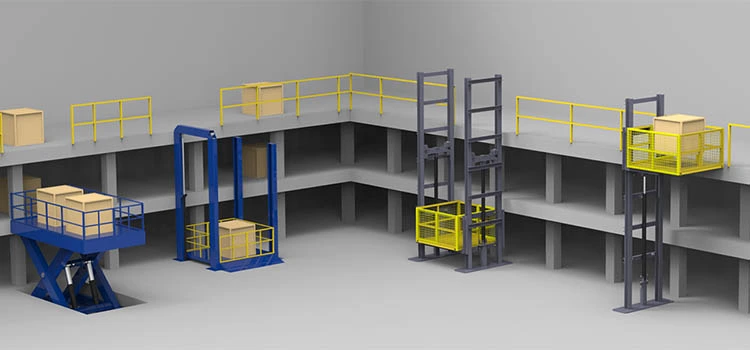Compare Disabled Platform Lifts Prices UK: Affordable Options for each Need
Compare Disabled Platform Lifts Prices UK: Affordable Options for each Need
Blog Article
Digging Into the Globe of Elevators: Common Problems Encountered by Different Lift Devices
As we navigate with the upright transportation systems of modern buildings, elevators stand out as an important part of our lives. Nevertheless, behind their smooth procedure exists a globe of detailed mechanisms that can often encounter difficulties. From hydraulic lifts to grip systems and machine-room-less designs, each lift type features its set of typical issues. Recognizing these difficulties is critical for making sure the smooth functioning of these important systems. Allow's discover the intricacies that underlie the operation of lifts and the possible problems that can develop, clarifying the elaborate web of lift systems.
Hydraulic Elevators
Hydraulic elevators, frequently chosen for low-rise buildings, use fluid stress to control the activity of the lift cars and truck (lift repair companies). This mechanism involves a hydraulic pump pressing oil right into a cylinder, creating the lift to relocate in the desired instructions. While hydraulic lifts are known for their smooth and silent operation, they do come with their very own collection of common concerns
One prevalent problem with hydraulic elevators is oil leak. In addition, problems with the control system, such as faulty shutoffs or a malfunctioning pump, can trigger disruptions in the elevator's movement.
Normal upkeep and timely repairs are important to make sure the smooth functioning of hydraulic lifts. By attending to these common problems proactively, building proprietors can reduce downtime and ensure the security and efficiency of their vertical transport system.
Traction Lifts
When taking into consideration upright transportation systems in structures, an additional typical type in addition to hydraulic lifts is the traction elevator. Traction elevators run making use of a system of ropes and counterweights that relocate the elevator auto by gripping onto the hoist ropes. This system permits smoother and faster vertical transport compared to hydraulic systems.
Among the common problems faced by grip lifts is rope wear. The constant motion of the ropes within the grip system can bring about damage gradually, potentially creating the lift to breakdown or end up being harmful for use. Routine evaluations and maintenance of the ropes are vital to make sure the lift's proper performance and safety.
An additional concern that traction elevators might come across is associated with the control system. Issues with the control system can cause issues such as erratic motion, delays in feedback times, and even complete shutdowns. Routine testing and upkeep of the control system are vital to avoid such issues and make certain the lift's reliability.
Machine-Room-Less (MRL) Lifts

Among the crucial components of MRL elevators is the compact gearless grip equipment that is installed within the hoistway. This maker effectively drives the elevator vehicle without the requirement for large tools found in traditional traction elevators. Furthermore, MRL lifts typically make use of a counterweight system to stabilize the automobile, additional improving their power efficiency.
In spite of their benefits, MRL lifts may deal with challenges connected to repair and maintenance due to the constrained area for tools installment. Ease of access for servicing elements within the shaft can be restricted, requiring specialized training for specialists. Proper maintenance schedules and routine inspections are important to guarantee the ongoing smooth procedure of MRL lifts.
Overloading and Weight Limitation Issues
Straining and weight restriction concerns are crucial see page worries in lift operations. Lift makers layout lifts with particular weight capacities to make sure passenger security and devices longevity.
When elevators are strained, it places extreme pressure on the motor, cable televisions, and other elements, possibly creating breakdowns or break downs. Security devices such as sensing units and overload sensing units are in place to protect against lifts from moving if they discover excess weight. Furthermore, surpassing weight restrictions can result in boosted energy consumption and wear and tear on the elevator system.
To alleviate overloading issues, developing managers should plainly present weight limitations in lifts and inform owners on the relevance of adhering to these restrictions - lift repair companies. Routine upkeep checks by qualified service technicians can also help make certain that elevators are running within safe weight criteria. By addressing overloading and weight restriction concerns proactively, structure owners can enhance lift security and effectiveness
Electric System Failings
Surpassing weight limitations in elevators can not just cause mechanical issues however also possibly contribute to electric system failures within the lift infrastructure. Electric system failures are an essential issue in elevator operation, as they can create unexpected closures, breakdowns, find and even security risks. One common electrical concern is the overheating of components due to too much present circulation brought on by overwhelming the lift past its capacity. This can lead to harm to the electric motor, wiring, or control systems, causing pricey repair work and downtime.
Routine maintenance and assessments are critical to determine and attend to possible electrical problems promptly, making certain the secure and efficient operation of lift systems. By adhering to weight restrictions and carrying out regular electrical system checks, structure proprietors can minimize the threat of electric failings in elevators.
Verdict

Hydraulic lifts, usually liked for low-rise structures, utilize fluid stress to regulate the movement of the lift car.When thinking about upright transport systems in buildings, one more usual kind apart from hydraulic lifts is the traction lift. Traction lifts run using a system of ropes and weights that move the lift automobile by clutching onto the hoist ropes. Unlike traditional elevators that need a separate device area to house the devices, MRL elevators integrate most of the elements disabled platform lifts prices uk within the shaft, eliminating the need for a committed maker area.In conclusion, elevators encounter typical concerns such as hydraulic breakdowns, grip system failures, and electric system issues.
Report this page